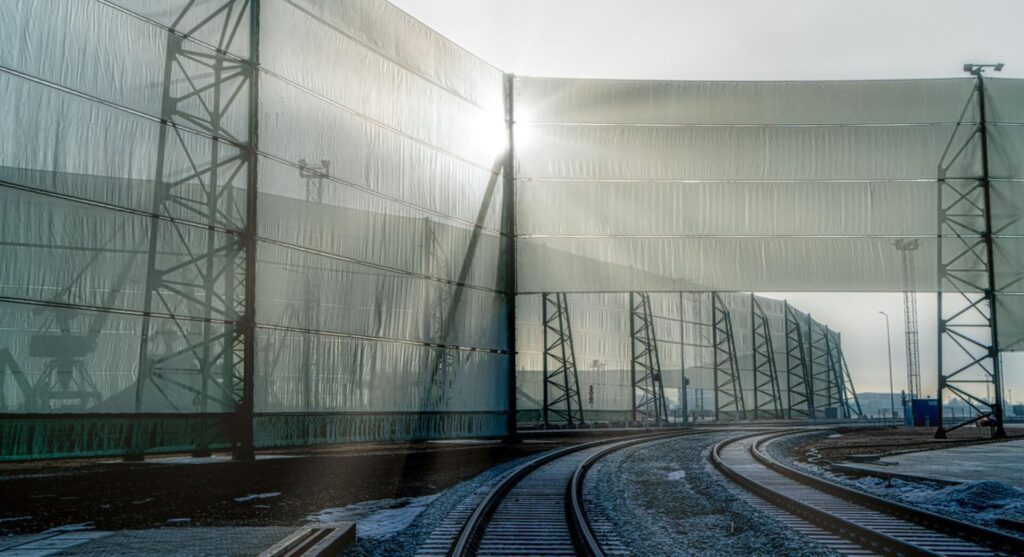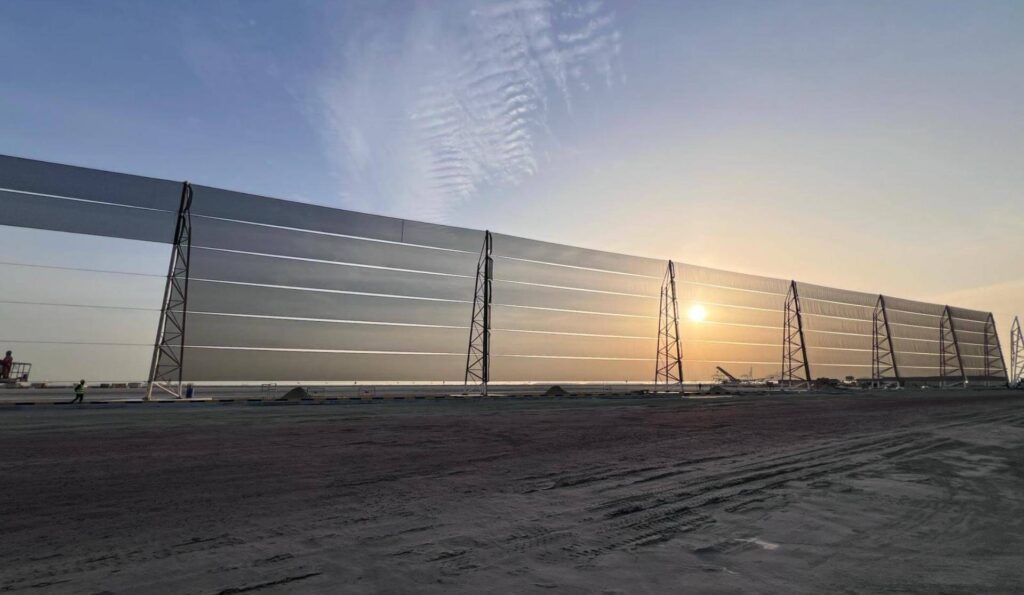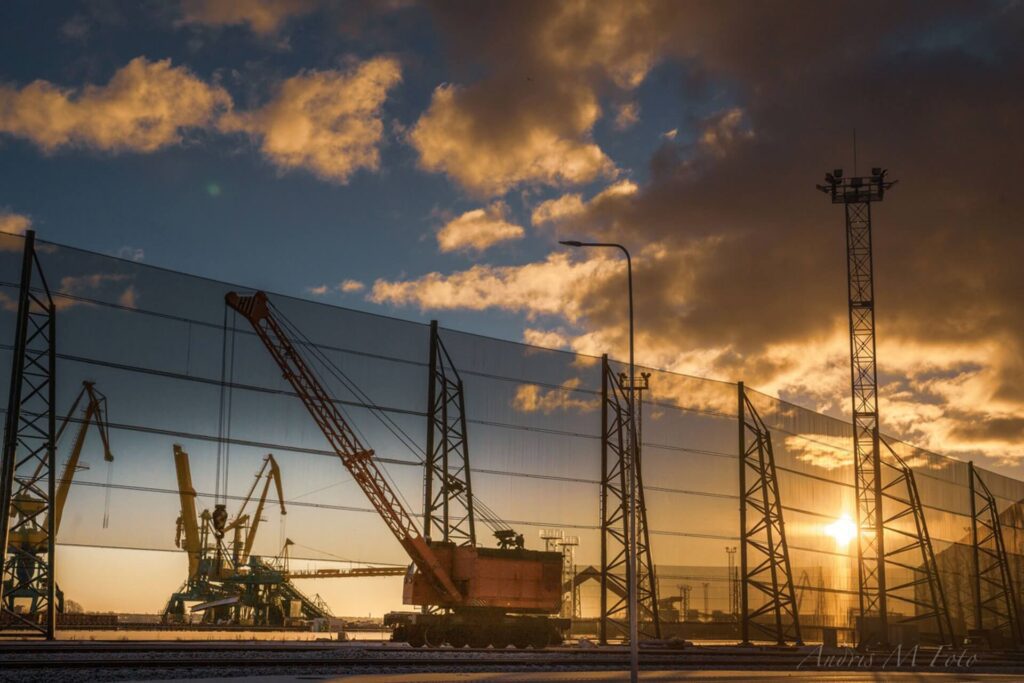Harnessing the wind: Exploring the R.O.I’s of a Wind Fence
Embark on this enlightening journey with us as we explore the fascinating realm of wind fences and their R.O.I Throughout this blog series we will be uncovering the intricacies of wind fences and how they play a crucial role in maximizing your companies’ profits while improving your environmental goals.
The implementation of an industrial wind fence is not just a protective measure against airborne dust; it’s a strategic investment with a myriad of tangible benefits. From safeguarding product quality and complying with environmental regulations to promoting health and safety, the wind fence acts as a silent guardian, ensuring operational efficiency and long-term sustainability.
As you consider the diverse advantages, such as cost savings, equipment longevity, and market competitiveness, remember that the value extends beyond immediate financial returns. A wind fence signifies a commitment to responsible practices, showcasing your organization as a leader in environmental stewardship. The positive ripple effects make the wind fence an integral part of a forward-thinking and resilient industrial strategy.
An industrial wind fence, also known as a windbreak or wind barrier, provides several Return on Investment (R.O.I) benefits for industries managing stockpiles, especially those where airborne dust is a valuable commodity blowing in the wind. There are numerous R.O.Is’ of implementing a wind fence to control stockpile dust:
1. Dust Control and Loss Prevention:
Reduced Dust Emission: The primary benefit of implementing a wind fence is a reduction of hazardous dust emissions from stockpiles. A well-designed wind fence, can reduce incoming windspeeds by up to 50%, and reduce dust distribution to 1/8th! A wind fence prevents valuable inventory from becoming airborne, or carried away by the wind, thereby minimizing material losses and preserving company profits.

2. Increased Product Yield:
Preservation of Product Quality: Wind fences help conserve the quality of stored materials through contamination prevention and airflow exposure degradation. This in turn leads to a higher yield of usable products and increased profit margins. It’s a “set it and forget it” solution with no daily consumables such as surfactants, electricity, water, or man-power.

3. Environmental Compliance:
Compliance Cost Savings: Most industries are increasingly under the watchful eye of local governance and by-laws. Industries that have dust emissions are under even further scrutiny to meet and exceed local environmental regulations. Failure to comply with these regulations may result in heavy handed penalties for dust levels exceeding acceptable allowances. As you can imagine this can have a negative impact on any business. The implementation of a wind fence is a simple and positive step toward avoiding these repercussions. WeatherSolve Structures has representatives all over the world standing by to come up with a customized solution for your site needs. Our fences are found from hot arid climates to cold icy extremes. WeatherSolve fences offer productive performance in any environment. By the ocean? Corrosive materials? We have a solution that will work for you!

4. Equipment Maintenance Savings:
Reduce wear and tear: Airborne dust is a significant contributor to heightened wear and tear on machinery, such as conveyor belts, crushers, vehicles, and other essential equipment. A wind fence for dust control mitigates this damage and extends the overall lifespan of equipment. Longer lasting equipment and less time spent on repairs results in a substantial reduction in operational and maintenance costs.
Mitigation of Electrical Risks: Beyond the general wear and tear on machinery, airborne dust poses another unique challenge. Let’s not forget that it is also crucial to address the potential presence of metals in airborne dust, as the metal in the air may become conductive. This conductivity poses a serious threat to electrical components, leading to potential disruptions and damage. The consequences range from electrical malfunctions to widespread havoc within HVAC systems. Dust particles infiltrating these systems can lead to clogged air filters, and in more severe cases, they may permeate air ducts, spreading throughout buildings. This not only disrupts indoor air quality but also poses a tangible risk to the integrity of electrical systems, potentially causing damage and operational issues.
Preservation of Structural Integrity: The detrimental effects of fugitive dust extend beyond machinery and electrical components to impact the very structures in proximity. Depending on the composition of the materials, dust can exhibit corrosive and abrasive properties, posing a threat to local buildings. This is manifested in various ways, ranging from damage to structures and windows to potential harm to building facades. By proactively controlling and mitigating fugitive dust through effective measures like wind fences, equipment is safeguarded and building presentation is improved.
Temperature Regulation – Wind fences can help regulate temperature by reducing wind chill effects in exposed warehouse buildings or mining sites. By reducing the wind speed (wind chill effect) in cold climates or providing shade in hot climates, they create more comfortable working conditions. This will increase employees happiness and engagement, we will talk about this in more detail later on.

5. Health and Safety Improvements:
Employee Health Benefits: Airborne dust inhalation is also detrimental to employee health. A wind fence can contribute to a healthier work environment by reducing airborne dust, which may lead to decreased absenteeism, lower healthcare costs, and improved overall employee well-being. As a point of reference the World Health Organization, attributes 6.7 million deaths annually to inhaling dust.
6. Operational Efficiency:
Process Optimization: A wind fence improves control over airborne dust allowing for better process optimization. A stable operational environment helps streamline operations, reducing downtime, and enhancing overall efficiency.
Employee Efficiency: Wind fences improve temperatures by reducing wind chill effects; increasing safety for people working at heights; and improving visibility. According to Forbes happy employees are 20% more efficient than unhappy employees.
A bonus feature for employees headed home: they will be happier when they get to their personal cars and they are not covered in dust!
A windfence creates more tolerable working conditions and focused employees. Dr. Steven Aldana, CEO of WellSteps says that American companies are lose 550 billion dollars a year due to unengaged employees

7. Long-Term Cost Savings:
Sustainability and Longevity: Investing in a WeatherSolve windfence demonstrates a visual commitment to sustainable environmental practices. By committing to a higher standard of dust mitigation and care to the environment you will enhance the company’s leadership & reputation with key stakeholders.
Cost Savings: The implementation of a WeatherSolve windfence minimizes the risk of operational disruptions caused by adverse weather conditions resulting in more predictable operational times. Not having these disturbances will provide sound of mind from unexpected losses.
8. Insurance Premium Reduction:
Risk Mitigation: Insurers tend to view implementing measures to control dust and prevent losses favorably. This could potentially lead to reduced insurance premiums as the overall risk profile of the operation is lowered
9. Market Advantage:
Competitive Edge: Operating with environmental responsibility and efficiency gives your business a competitive edge in the market. Customers and partners will prefer to work with companies that prioritize sustainability and environmental compliance.
In a world increasingly focused on sustainability and accountability, the decision to invest in a wind fence isn’t just about mitigating risks; it’s about embracing opportunities for growth, resilience, and excellence. Conducting a cost-benefit analysis is a pathway to unlocking the full spectrum of benefits that a well-designed wind fence can bring to your industry. The winds of change are blowing, and with a WeatherSolve wind fence in place, your business can navigate them with confidence, purpose, and success.
Gratitude to those who have inquired about the Return on Investments (R.O.I’s) associated with wind fences – an engaging and pertinent topic! To elevate the interactive aspect, there’s a button below that transforms this into an engaging blog series. We invite you to share your questions or suggest topics for deeper exploration by clicking through and leaving your comments. Your input will be addressed in the upcoming blogs of this series.

Leave a Comment